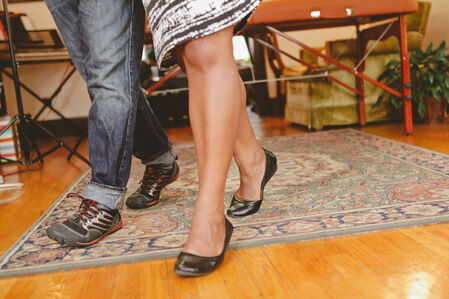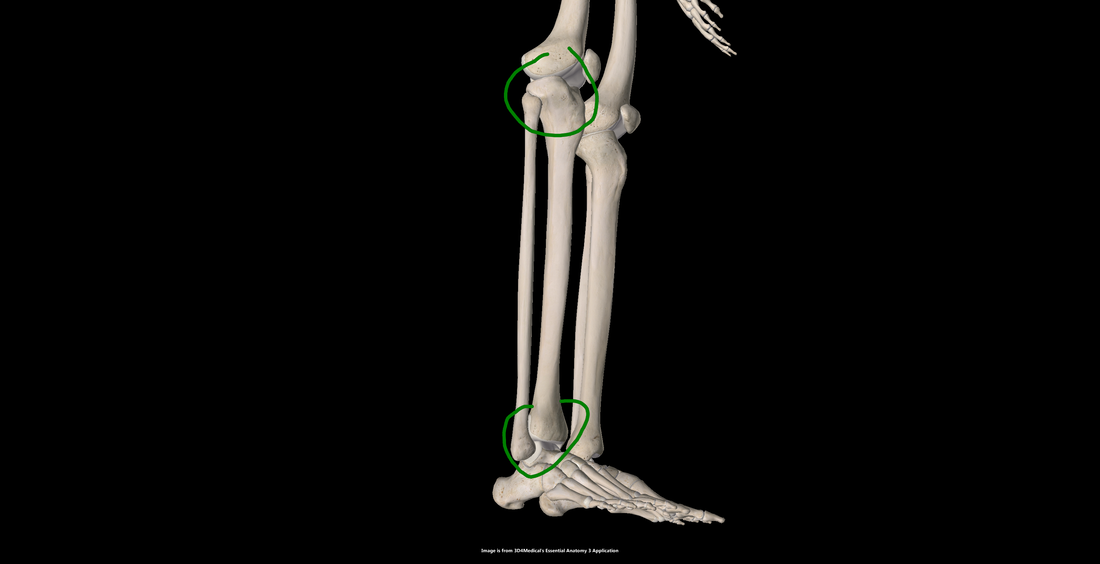|
Picture this--you are about to step in front of a huge crowd to deliver the speech of your life. Naturally, you are a bit nervous. You stride out onto the stage, turn to face your audience, and.... What happens to your legs? If you are like 90% of my clients, your knees lock. This may seem like a small thing but it has far reaching consequences. When your knees lock, it is a symptom of the whole body locking. As a natural consequence of this small action a cascade of things happens to you: you tilts slightly backwards, bringing you off of your center of gravity and putting all of your weight on your neck and back. The back of your legs and glutes tighten to keep you from falling backwards, your head tilts back, and your shoulders tense in an attempt to brace you. This has subtle but deep consequences--your breathing becomes more shallow and is forced into your chest and your larynx tightens against your throat, constricting your voice. Your face takes on a strained quality, and you realize you are leaning subtly away from your audience. They feel distanced from you. You start to feel a nervous sensation. You try harder, and find that your arms fly up in front of you and you begin to gesture distractingly. You are caught in a Tension Loop. Tension Loops happen when a response to stress cascades from one part of ourselves through our whole body--and when we try to correct the problem we end up sinking further into it. Often this is because we are trying to treat the symptom--tense shoulders, shallow breathing, strained voice--rather than the cause. For many of us, one of the major causes of a Tension Loop has to do with locking our legs--often a well-intended attempt to stabilize and ground ourselves when we are nervous. We often feel this as our knee locking, when it is actually our whole leg. When this happens we lose the natural support system of the lower body and the upper tenses to compensate. If we realize our knees are locked and try to unlock them, a funny thing happens--for many of us, we actually end up breaking apart at the spine just above the pelvis instead (as in the person below). We sometimes identify this as a tilt in our pelvis, when it actually is a symptom of the joints of our legs being locked. So how do we actually solve this problem, unlock our legs, and relax into the support of the ground? The magic key to unlocking your knee is your ankle. Unless we have an injury, most of us don't really think about our ankles often. They are one of the joints that are furthest from our head, so most of us aren't used to relating to them. But all of the joints of the legs are inseparably interrelated, so it is impossible to unlock your knee without unlocking your ankle first. Why? Take a look at the picture below. You will notice that the ankle and knee are two ends of a lever--very simply, if the ankle is locked, the knee locks with it and visa versa.
The plus side of this is that if you unlock the ankle, the knee will magically release. This "how" is unfamiliar but simple. You may tell yourself you don't know how to unlock your ankle, but it is easy--just think of releasing it a little bit. Since it is the foundational joint of the body, when it lets go all of the other joints automatically adjust. Most people find their knees will release without trying when the ankle does and they will immediately feel their body settle into a sense of groundedness. With this groundedness the upper body is able to relax and is free to move and express. (NOTE: it is important as you release the ankle to keep a sense of connection in your spine, so your whole body does not collapse as well) This one simple idea can transform performance. It helps you to relax, find your flow, and put your best foot forward. Next time you are performing or even are just standing around, try this out and see what it gets you.
0 Comments
Leave a Reply. |
Thoughts on what is going on in the work and the world right now. Many posts to come. Archives
June 2021
Categories |



 RSS Feed
RSS Feed